|
|
|
|

LINGO / JARGON
|
|
Cross referenced list of words & phrases that are used in film, video and digital production.

ACTION: Cue for starting a shot/scene/sequence of events. As well as a reference to activity on screen (in front of camera).
ACTORS (PERFORMERS): On an indy level type casting is one approach to getting non-actors to play a part more convincingly. Also referred to as "the talent".
ALIASING: Undesirable video display effects caused by too much high frequency video information. Examples are;
* Temporal aliasing - e.g. rotating wheel spokes apparently reversing direction.
* Raster scan aliasing - e.g. twinkling or strobing effects on sharp horizontal lines.
* Stair-stepping - Stepped or jagged edges of angled lines, e.g. at the slanted edges of letters. (See also; anti-aliasing). Fig 1; Shows familiar stepping known as aliasing.
1) Aliasing example
ANALOGUE: A method of representing data using continuously varying electrical voltages. Analogue video whether transmitted over cables, read from videotapes or broadcast, is subject to degradation due to noise, distortion and other electronic phenomena. Normal signal levels should be within 0.7-1 volt. (See also; digital)
ANIMATION: Frame by frame control/manipulation to give the illusion of movement when played back. (See also; dope sheet, single frame, fps & rostrum)
ANTI ALIASING: The process of electronically reducing aliasing, especially letters and genlocked graphic elements. Fig 2; the same picture as Fig 1 above (aliasing), but the stepping effect is reduced (softened), anti-aliasing.
2) Anti-Aliasing example
APERTURE: Adjustable opening (in camera/lens), operates like the iris in an eye. Varying the amount of light entering a camera i.e. exposure.
ASPECT RATIO: The height and width of a television screen or motion picture image. The ratio for a TV monitor is 4:3, or 16:9 for widescreen TV and High Definition (HDTV). Go to ‘Screen Aspect Ratios’.
AUDIO: The "other half" of any movie production consisting of frequencies corresponding to a normally audible sound wave (20 Hz to 20,000 Hz), the "soundtrack" of a videotape. Both the Video Equaliser and Sound Effects Mixer offer audio mixing / editing capabilities.
AUDIO BANDWIDTH: The range of audio frequencies which directly influence the fidelity of a sound. The higher the audio bandwidth, the better the sound fidelity. The highest practical frequency which the human ear can normally hear is 20 kHz. An audio amplifier which processes all frequencies equally (flat response to 20 kHz) and a reasonably high signal to noise ratio, will faithfully reproduce the audio soundtracks of a video recording.
AUTO CUE (TELE PROMPTER): Something indies probably rarely encounter, but sheets of paper with written dialogue can help as prompts for forgetful performers.
AUDIO DUB: VCR feature allowing replacement of the audio signals on a previously recorded tape without disturbing the video signal. When dubbing is not available via the video recorder, audio dubbing can be performed while recording using an audio mixer.
AUDIO EDITING: Similar to video editing. Various portions of audio material are combined and recorded onto the videotape in one continuous form. For example, when a sound track is added to a videotape, various sounds such as background music, sound effects and narration, may be introduced in order to highlight particular movie scenes. The Video Equaliser and Sound Effects Mixer offer audio mixing / editing capabilities.
AUDIO LEVELS: Proper audio levels are crucial. If the audio level is too high when recording, overload of the input electronics will cause audio distortion. If audio levels are too low, the signal-to-noise ratio deteriorates. Audio levels are typically indicated either by mechanical VU-meters or electronic LED bar graph meters.
AUDIO MIXING: The blending of two or more audio signals to generate a combined signal which is often used for audio dub. During video processing, audio mixing may be used to insert narration or background music.
AUTOMATIC GAIN CONTROL (AGC): Circuitry used to ensure that output signals are maintained at constant levels in the face of widely varying input signal levels. AGC is typically used to maintain a constant video luminance level by boosting weak (low light) picture signals electronically. Some equipment include gain controls which are switchable between automatic and manual control.
AUTOMATIC LEVEL CONTROL (ALC): Circuitry used to automatically adjust the audio recording level to compensate for variations in input volume. Some equipment includes level controls which are switchable between automatic and manual control.

B ROLL: Stock footage acquired for miscellaneous needs.
BACK LIGHT:
1) Light that illuminates object/subject from behind (for instance; to highlight an edge of a dark object/subject against a dark background, to stop the two merging together).
2) This term also refers to a switch on some camcorders that compensates for back lighting.
BARN DOORS: Four metal hinged flaps that fit on the front of film lights in order to direct and control light more effectively. (See also; gels, key light, fill light, reflector)
BEST BOY: A gaffers assistant. They sort out the electricity to the lights, including the cables, ensuring everything is safe.
BETACAM: Portable, professional camera/recorder format developed by Sony. Betacam uses a component video system. Betacam uses half inch metal particle tape and a wider bandwidth recording system. Introduced by Sony in 1982. The protable cassettes were based on the original Betamax cassettes type. (See also; D-3 and U-matic)
BETACAM SP: A ‘superior performance’ version of Betacam. SP uses metal particle tape and a wider bandwidth recording system. (See also; D-3 and U-matic)
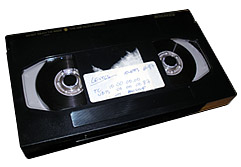 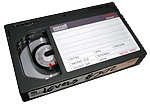
BETAMAX: Consumer videocassette record/playback tape format using half-inch wide magnetic tape. Developed by Sony, Betamax was the first home VCR format.
BIT PARTS: Performers/actors that only have small parts to play (little dialogue - bit). (See also; extras)
BLACK A TAPE: The process of recording a black burst (see below) signal across the entire length of a tape. Often done before recording edited footage on the tape to give the tape clean, continuous video and sync and to insure there is no video already on the tape.
BLACK BURST: A composite colour video signal comprised of sync, colour burst and black video. It is used to synchronise (genlock) other video sources to the same sync and colour information. Black burst generators are used in video studios to "lock" the entire facility to a common signal ("house sync" or "house black").
BLACK LEVEL: The voltage in a video signal which corresponds to black. (See also; pedestal)
BLANKING LEVEL: Also known as the pedestal, it is the voltage level produced at the end of each horizontal picture line which separates the portion of the video signal containing the picture information from the portion containing the synchronising information. This voltage makes the electron beam "invisible" as it moves to draw the next visible line.
BLANKING INTERVAL (HORIZONTAL & VERTICAL): The horizontal blanking interval is the time between the end of one scanning line and the beginning of the next. The vertical blanking interval is the time between the end of one video field and the beginning of the next. Blanking occurs when a monitor's electron beam is positioned to start a new line or a new field. The blanking interval is used to instantaneously reduce the beam's amplitude so that the return trace is invisible.
BLOCKING: Organising and choreographing action / performers within a scene, positions, props etc. (See also; staging)
/ lights with camera. Ensuring that things are framed correctly for the shot and actors know their positions within a shot. That all the needs of the shot are considered and the composition is what is required.
2) Organising sets of shots and action around camera and lighting set-ups (although there can be other considerations), for the most effective and economical use of shooting time. For instance, filming all shots while in one set-up (camera and lights positioned and facing one direction), before proceeding to shoot all shots in another set-up where the camera and lights are facing the opposite direction from the first. This is one reason why films are not filmed in story sequence.
BNC CONNECTOR: A type of connector used on some VCRs, video and RF equipment providing twist-lock capability.

CAMCORDER: Combination of camera and video tape recorder in one device. Camcorders permit easy and rapid photography and recording simultaneously. Camcorders are available in home video and professional formats. (See also; video camera). More likely now almost all video cameras are camcorders because memory cards (which slot into the camcorder) have taken over from tapes.
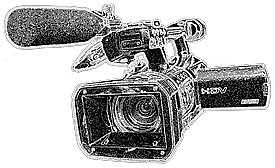
CAMERA LOG: Details written down after each shot / take. Including clapper board / slate info and description of shot etc. (Example/template for a "camera log").

CAMERA OPERATOR: Crew member who operates the camera during a shot, under the instructions of his / her DP (Director of Photography), also known as the cinematographer.
CANDLEPOWER: The unit measure of incident light. (See also; lux)
CANTED ANGLE: (Camera); See; ‘dutch angle’.
CAPTION SAFE AREA: Go to; Caption/Title Safe Area
CATV: Acronym for cable TV, derived from the older term, Community Antenna Television.
CCD (CHARGE COUPLED DEVICE): Semiconductor device, converts optical images into electronic signals. CCDs are in camcorders / video cameras. (See also; CMOS)
CCIR (COMITE CONSULATIF INTERNATIONAL DES RADIOCOMMUNICATIONS): A European committee situated in Paris responsible for creating and approving professional standards related to audio and video.
CELL (CELLULOID): Clear/flat plastic sheets used to create painted artwork for animation work with a separate background seen through unpainted clear plastic. (See also; animation)
CGI (COMPUTER GENERATED IMAGE/S): Any computer manipulation, from retouching (airbrushing out unwanted items in picture), to full screen computer generated shots, either 2d and/or 3d.
CHROMA: The colour information contained in a video signal, consisting of hue (phase angle) and saturation (amplitude) of the colour subcarrier signal.
CHROMA CORRECTOR: A device used to correct problems related to the chroma of the video signal, as well as colour balance and colour noise.
CHROMA KEY: The process of overlaying one video signal (picture) over another by replacing a range of colours with the second signal. Typically, the first (foreground) picture is photographed with a person or object against a special, single-colour background (the key-colour). The second picture is inserted in place of the key-colour. The most common example is in broadcast weather segments where pictures of weather maps are inserted "behind" the talent (performer / actor).
CHROMA NOISE: Noise which manifests itself in a video picture as coloured snow.
CHROMINANCE & CHROMINANCE LEVEL: The colour portion of a video signal separate from the luminance component, representing the saturation and tint at a particular point of the image. Black, grey and white have no chrominance, but any coloured signal has both chrominance and luminance. The higher the chrominance level, the stronger the colour (e.g. a strong signal produces red, and a weak signal, pink). Colour saturation level can be changed using a colour processor such as the Video Equaliser.
CINEMATOGRAPHER: Popularly known as the DP (Director of Photography). Your DP may direct a camera operator, or operate the camera themselves. The DP also works closely with the gaffer. (See also; camera operator)
CLAPPER-BOARD: A means to marry / synchronise (sync) picture and sound so that the audio (i.e. dialogue) and associated action happen at the same time. Also referred to as the slate. (See; lip sync, shot/s, take/s). See also digislate and MOS. Go to the ‘Clapperboard’ section for further information.
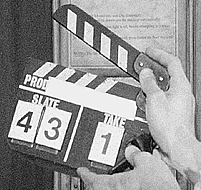
CLICK TRACK: A simple audio way to help pace action that may have music accompanying it. A track with pulses/tones following beats to the bar etc.
CLIPPING: The electronic process of shearing off the peaks of either the white or black excursions of a video signal for limiting purposes. Sometimes, clipping is performed prior to modulation, and sometimes to limit the signal, so it will not exceed a predetermined level.
CMOS (Complementary Metal Oxide Semiconductor): Converts optical images into electronic signals for cameras / camcorders. Updating and replacing CCD’s.
COAXIAL CABLE: The standard cable consisting of a central inner conductor and a cylindrical outer conductor. Used for many video connections, especially by CATV companies.
CODEC: An abbreviation for Compression / Decompression. Basically in visual terms compressing (encoding) and decompressing (decoding) an image makes it a smaller file size, to take up less space on the recording medium than an uncompressed image. The image is compressed for storage and decompressed for displaying. The process could be considered similar to zipping and unzipping a file. See also; compression.
COLOUR BARS: An electronically generated video pattern consisting of eight equal width colours, used to establish a proper colour reference before recording and playback and for adjustment purposes. (See also; ebu and smpte)
 
COLOUR BURST: The portion of a colour video signal which contains a short sample of the colour subcarrier used to add colour to a signal. It is used as a colour synchronisation signal to establish a reference for the colour information following it and is used by a colour monitor to decode the colour portion of a video signal. The colour burst acts as both amplitude and phase reference for colour hue and intensity. The colour oscillator of a colour television receiver is phase locked to the colour burst.
COLOUR CORRECTION: A process in which the colouring in a television image is altered or corrected by electronic means. (See also; chroma corrector)
COLOUR DECODER: A device which divides a video signal into its basic colour components. In TV and video, colour decoding is used to derive signals required by a video monitor from the composite or Y/C signals.
COLOUR PHASE: The phase of the chroma signal as compared to the colour burst, is one of the factors that determines a video signals colour balance.
COLOUR TEMPERATURE: A method for specifying the overall colour of a light source, measured in degrees Kelvin (deg.K). Higher numbers indicate warmer/orange light, lower numbers indicate a colder/bluer light. (* following are examples only).
*Daylight = 5000-5500+ deg.K
*Fluorescent = approx. 4100 deg.K
*Indoor incandescent = 2800 deg.K
COLOUR SUBCARRIER: The 4.43 MHz/PAL or 3.58 MHz/NTSC signal added to a black and white television signal to add colour information. The subcarrier frequency is too high to be detected by black and white televisions ensuring compatibility. Colour sets employ special circuitry which detects and decodes the colour component (see below) for display.
COMBING (INTERLACE): See Interlace Combing.
COMPONENT VIDEO: Most home video signals consist of combined (composite) video signals, composed of luminance (brightness) information, chrominance (colour) information and sync information. To get maximum video quality, professional equipment and some consumer equipment keep the video components separate. Component video comes in several varieties: RGB (red, green, blue), YUV (Y/C, sync, and red/blue) and Y/C (Y/C and chrominance).
COMPOSITE SYNC: A signal consisting of horizontal sync pulses, vertical sync pulses and equalising pulses only.
COMPOSITE VIDEO: A video signal in which the luminance (brightness), chrominance (colour), blanking pulses, sync pulses and colour burst information have been combined using one of the coding standards. (NTSC, PAL, SECAM).
COMPRESSION:
1) The process of electronically processing a video picture to make it use less storage or to allow more video to be sent down a transmission channel.
2) The process of removing picture data to decrease the size of a video image. See also; codec.
CONTINUITY: The smooth unfolding / transition of events, both in terms of action, interaction and with all props, wordrobe etc. (See also; script supervisor)
CONTINUITY ERROR: For instance, when you get to the edit and realise in one shot a character picks something up with their left hand, and in the follow on shot they pick up with the right hand.
CONTRAST:
1) The degree to which the various luminance values in a picture are mapped to very dark and very light values. A high-contrast picture is dominated by black and white and few values between. A low contrast picture has a lot of middle tones without many very dark or very light areas.
2) A control on a television or monitor which adjusts the white level of the picture.
CONTROL TRACK: The magnetised portion along the length of a videotape on which sync control information is placed. The control track contains a pulse for each video field and is used to synchronise the tape and the video signal.
COPYRIGHT: Go to ‘Copyright’.
CRAB DOLLY: Description for physically moving the camera sideways, perhaps following a performer walking. The term can also be used to describe a shot that tracks around a subject. (See also; pan, tilt, crane, dolly)
CRANE: Movement up or down by physically lifting, lowering the camera. (See also; jib, pan, tilt, crab dolly, dolly)
CROSS FADE: The audio equivalent of the video dissolve where one sound track is gradually faded out while a second sound track simultaneously replaces the original one.
CROSSING THE LINE (180 DEGREES): Go to; Camera Tips
CUT / CUTTING: Instruction to end a shot/take ‘cut’ and cutting, to physically splice pieces of film together. The term is still used although the methods have changed considerably. (See also; editing, jump cut)

D-3 VIDEOTAPE: Half inch digital video in cassette developed by Panasonic for both PAL and NTSC encoding. This was an uncompressed video format, released in 1991. It was the third in line of these early digital tapes, preceeded by D-1 and D-2. (See also; Betacam SP and U-matic)
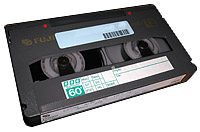
DAILIES: Is a term for screening uncut media shot earlier, or the previous day. (See also; rushes)
DAT (DIGITAL AUDIO TAPE): A consumer digital audio recording and playback system developed by Sony, with a signal quality capability surpassing that of the CD.
dB (DECIBEL): A unit for expressing the ratio of two amounts of electric or acoustic signal power, used for measuring audio and video signals. Technically, this is equal to 20 times the common logarithm of the voltage or current ratio.
DCI 4K: See 4K
DECODE: To separate a composite video signal into its component parts.
DEFINITION: The aggregate of fine details available on-screen. The higher the image definition, the greater the number of details that can be discerned. During video recording and subsequent playback, several factors can conspire to cause a loss of definition. Among these are the limited frequency response of magnetic tapes and signal losses associated with electronic circuitry employed in the recording process. These losses occur because fine details appear in the highest frequency region of a video signal and this portion is usually the first casualty of signal degradation. Each additional generation of a videotape results in fewer and fewer fine details as losses are accumulated.
DELAY CORRECTION: When an electronic signal travels through electronic circuitry or even through long coaxial cable runs, delay problems may occur. This is manifested as a displaced image and special electronic circuitry is needed to correct it.
DEMODULATOR: An electronic circuit which separates the audio and video signals from the RF carrier frequency.
DEPTH OF FIELD: Way of describing a images depth and focal length, which can be adjusted via exposure as well as/or instead of focus.
DIGISLATE: Modern clapper boards usually display timecode. Go to the ‘Clapperboard’ section for further information. (See; lip sync, shot/s, take/s). See also; MOS.
DIGITAL: A method of representing data using binary numbers. An analogue signal is converted to digital by the use of an analogue-to-digital (A/D) converter chip by taking samples of the signal at a fixed time interval (sampling frequency). Assigning a binary number to these samples, this digital stream is then recorded onto magnetic tape. Upon playback, a digital-to-analogue (D/A) converter chip reads the binary data and reconstructs the original analogue signal. This process virtually eliminates generation loss as every digital-to-digital copy is theoretically an exact duplicate of the original allowing multi-generational dubs to be made without degradation. In actuality of course, digital systems are not perfect and specialised hardware/software is used to correct all but the most severe data loss. Digital signals are virtually immune to noise, distortion, crosstalk, and other quality problems. In addition, digitally based equipment often offers advantages in cost, features, performance and reliability when compared to analogue equipment.
DIN (DEUTSCHE INDUSTRIE NORME): An international connector standard. DIN connectors carry both audio and video signals and are common on equipment in Europe.
DIRECTOR: Responsible for what appears on film and the method employed. Guides / supervision of actors and crew through scenes and shots.
DISSOLVE: Transition between two separate shots (gradual blend from one to the other).
DISTORTION: In video, distortion usually refers to changes in the luminance or chrominance portions of a signal. It may contort the picture and produce improper contrast, faulty luminance levels, twisted images, erroneous colours and snow. In audio, distortion refers to any undesired changes in the waveform of a signal caused by the introduction of spurious elements. The most common audio distortions are harmonic distortion, intermodulation distortion, crossover distortion, transient distortion and phase distortion.
DOLBY (TM): A compression/expansion noise reduction system developed by Ray Dolby, widely used in consumer, professional and broadcast audio applications. Signal-to-noise ratio improvement is accomplished by processing a signal before recording and reverse-processing the signal upon playback.
DOLLY: A device for moving a camera smoothly along, often referred to as a tracking shot. Professional dolly's are very expensive, but cheaper forms can be hired, or built. Also refers to camera movement forwards or backwards (also referred to as ‘push in’ and ‘pull out’. (See also; pan, tilt, crane, crab dolly)
DOPE SHEET: For use on animation. A form that splits action and dialogue/music into frames, in order to match the animation and audio. (See also; fps)
DP (DIRECTOR OF PHOTOGRAPHY): See; ’cinematographer’.
DROPOUT: A momentary partial or complete loss of picture and/or sound caused by such things as dust, dirt on the videotape or heads, crumpled videotape or flaws in the oxide layer of magnetic tape. Uncompensated dropout produces white or black streaks in the picture.
DUB / DUBBING: A duplicate copy made from one recording medium to another.
DUTCH ANGLE: (Camera); To tilt the camera to the side, so that the image appears slanted on screen. Also referred to as canted angle, oblique angle (example below).
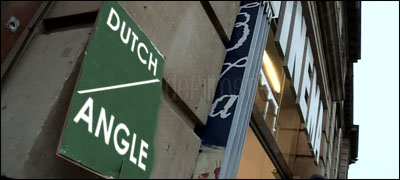
DVI (DIGITAL VIDEO INTERFACE): Multimedia standard for computer generated text and graphics merged in video production.
DVD: Digital Versatile Disc.

EBU (EUROPEAN BROADCASTING UNION): Professional association of national broadcasters that negotiates and advocates for interests of public broadcasters. Established on 12th February 1950. The website specifies (in 2014) that it comprises of 75 members from 56 countries in and outside Europe, and a further 72 active members in 22 countries. The EBU represent an alliance of public service media and a forum for media professionals to share ideas. The EBU-TECH sets standards in agreements and content quality (technical standards, both visual and audio) as well as bringing various and different formats and systems together (common accepted standards and formats). www3.ebu.ch/home. There is also a World Broadcast Union WBU. (see also; smpte)
EDL (EDIT DECISION LIST): Print out from video (or non-linear edit) resource that logs details such as edit in and out points, both for picture and sound. Usually used for on-line edit by keying in numbers and allowing machines to do the physical cutting/editing. (See also; "timecode")
EDITING / CUTTING: The physical or otherwise process of putting the final material (picture & sound) together, in order to build scenes/sequences. (See below and; off-line, on-line, rough cut)
*A/A (A/X/A) Roll Editing: Editing from a single source using effects to mix from the source to itself (source A to A) using a freeze frame (for example) at the end of a scene to mix to the next scene.
*A/B Roll Editing: Editing from two sources (A to B) to a third (master), either rolls of film, digitally, or video via a VCR or a vision mixer.
ENCODE: The process of combining analogue or digital video signals, e.g. red, green and blue, into one composite signal.
ENHANCING: Improving a video image by boosting the high frequency content lost during recording. There are several types of enhancement. The most common accentuates edges between light and dark images.
EXPOSURE (EXPOSURE METER): A device and means to measure amounts of light, and an aperture, or similar device to adjust the light getting into the camera. Most modern equipment now has automatic exposure control, but may also include a manual override. (See also; aperture, lux & candlepower)
EXTRAS: People present on films to act as crowd, or general bodies, non-speaking parts mostly. (See also; bit parts)

FADE: The act of dissolving a video picture to either a colour, pattern or titles. Fading a video image is often used as an artistic tool in video productions, most commonly seen as a fade to black. In audio, there is a decrease in the sound level until it is no longer audible. Audio fading is often used in conjunction with video fading causing the sound and image to fade simultaneously.
FAIR DEALING: Go to ‘Fair dealing’.
FIELD: One-half of a complete television picture consisting of one complete vertical scan of the video image containing 312.5 lines for PAL and 262.5 lines for NTSC. Two fields make up a complete television picture frame. (See also; interlacing)

FILL LIGHT: Commonly referred to as "scoops" provide a soft-edged field of light used to provide additional subject illumination to reduce harsh shadows or areas not highlighted by the key light. This techniqyue can have a markedly different effect than a reflected fill light. (See also; reflector)
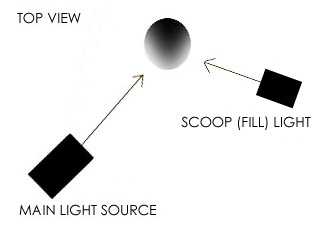
FILM: The physical material (optical photographic celluloid) now used for over 100 years, since the days of inflammable nitrate stock to the current fading star. Formats included Standard 8 mm, Super 8 mm, Single 8 mm, 9.5 mm, 16 mm, Super 16 mm, 35 mm, 65 mm, 70 mm. Each format has perforations (sprocket holes) either down one side, or both, except for 9.5 mm which has perforations in the middle between each frame. VistaVision has sprocket holes top and bottom of the frames because the film travels sideways through the camera, thus enabling far larger picture area and quality.
FLIP: Special effect in which the picture is either horizontally or vertically reversed.
FOCUS (FOCAL POINT): Often automatic with many new camcorders, but usually manually adjusted with a twist action ring on the lens, affects the focal point within an image (point in focus). (See also; manual override, depth of field)
(FOUR) 4K: Describes a higher digital video image resolution of around 4,000 pixels (K = 1,000), or up to four times the resolution of High Definition. However, there are a number of 4K resolutions. These include the following three main examples; UHD, UW4K and DCI 4K.
UHD or UHD-1, UHDTV (Ultra High Definition): 3840 x 2160 pixels (16:9, 1.78:1 aspect ratio). This form of 4K is used for consumer TV and monitors.
UW4K (Ultra Wide 4K): 3840 x 1600 pixels (2.40:1 aspect ratio). Used for Ultra HD Blu Ray and Gaming monitors.
DCI 4K ‘envelope’ (Digital Cinema Initiative): 4096 x 2160 pixels (1.90:1 aspect ratio). This version of 4K is only used in the film and video industry. It replaces the previous resolution of DCI 2K.
FPS (FRAMES PER SECOND): Differs from US to UK (30fps to 25fps), from film to TV (24fps to 25fps/30fps). A rate of playback (frame rate) to create the illusion of movement on screen. Higher frame rates over-cranking produce slower action slo-mo. Lower frame rates under-cranking make actions quicker when played. One frame at a time is termed animation or sometimes time lapse. (See also; single frame)
FRAME: A complete video image consisting of 2 fields. Also used to describe the total visible area of a video image.
FREEZE FRAME: Special effect in which the picture is held as a still image. It is possible to freeze either one field or a whole frame. Freezing one field provides a more stable image if the subject is moving, however, the resolution of the video image is half that of a full frame freeze. Digital freeze frame is one special effect that could be created with a special effects generator or a TBC.

GAFFER: Effectively lights scenes and works closely with the cinematographer to get the lighting right for each shot. (See also; grip, best boy)
GELS: Transparent (coloured) plastic filters that are used to add colour to lights. Needs to be heat resistant. (See also; barn doors)
GENERATION: The number of duplication steps between an original recording and a given copy. A second generation duplicate is a copy of the original master and a third generation duplicate is a copy of a copy of the original master, etc.
GENERATION LOSS: When an analogue master videotape is duplicated, the second-generation copy is usually inferior in some way to the master. This degradation appears as loss of detail, improper colours, sync loss, etc. Limited frequency response of audio / video magnetic tape and imperfections in electronic circuitry are the main causes of generation loss. Digital formats make generation loss negligible because each copy is essentially an exact duplicate of the original. Video enhancing equipment can minimise generation loss. Some video processors pre-enhance the video signal to overcome generation loss.
GENLOCK: A method of synchronisation involving the generation of a video signal sync-locked with another signal. Because they are synchronised, a genlocked signal can be mixed with the original signal, allowing dissolves, wipes, and other transition effects. Genlock and frame synchronisation differ in that genlock is the generation of a new signal synchronisation to a video signal that is already present while frame synchronisation takes two already-generated signals and synchronises them. Genlocking two VCRs requires the use of a TBC (Time Base Corrector).
GRIP: Personnel on a film who move equipment, (i.e. set up cameras, lights, dolly tracks etc). They usually work under instruction from the gaffer and/or cinemetographer. Grips can also set up and operate a dolly to track the camera (called dolly grips).

HARMONIC DISTORTION: When any signal is passed through an electronic circuit, the signal may be changed in many ways. In video, the image may become blurred, noisy or contain shadows. In audio, odd harmonics (third, fifth, etc.) produce harsh and unpleasant sounding audio.
HDTV (HIGH DEFINITION TELEVISION), or HD: A television format for producing high resolution video. Typically, this system now provides 1920 - 1080 resolution (compared to 720 - 576 / 4:3 resolution) and the now familiar aspect ratio of 16:9 (1.78:1), for image quality approaching 35mm film photography. See also; 4K
HEAD: (On a tripod); Mechanism used for panning and tilting the camera smoothly (often referred to as a pan & tilt head), while on a tripod or other stabiliser.
HELICAL SCAN: A method of recording video information diagonally on a tape, used in home and professional VCRs. High speed rotating video heads scan these diagonal video tracks, giving an effective tape speed much higher than the actual tape speed allowing more information to be recorded on a given length of magnetic tape.
HISS: The most common audible noise component in audio recording, stemming from a combination of circuit and tape noise. Several noise reduction systems are available, such as Dolby, DBX, DNR (Dynamic Noise Reduction), DNL (Dynamic Noise Limiter), to help alleviate such problems. (See also; noise reduction)
HORIZONTAL RESOLUTION: Rating of the fine detail (definition) of a TV picture, measured in scan lines. The more lines, the higher the resolution and the better the picture. A standard VHS format VCR produces 240 lines of horizontal resolution, while over 400 lines are possible with S-VHS (Super VHS).
HORIZONTAL SYNC: The sync pulse signal produced at the beginning of each video scan line which keeps a video monitors (TV sets) horizontal scan rate in step with the transmission of each new line.
HUE: Often used synonymously with the term tint. It is the dominant wavelength which distinguishes a colour such as red, yellow, etc. Most commonly, video hue is influenced by:
1) A camera's white balance
2) Scene lighting
Video colour processors such as the Video Equaliser are the main tools used to adjust and correct hue problems.

IMAGE STABILISATION: A camcorder feature which takes out minor picture shakiness (i.e. hand held camera wobble), either optically or electronically.
IMPROVISE: Kind of making it up as you go along, well dialogue wise usually. Actually, most film makers that use this method set out a direction to start with, and the performers then go from A to B etc.
INSERT EDIT: Camcorder and/or VCR feature which allows a user to insert new audio / video segments into the middle of a previously recorded tape. Some camcorders insert both audio and video simultaneously, others can insert audio or video separately.
INTERLACE COMBING: Lines visible when interlaced (i) media is viewed on progressive (p) equipment (a computer for instance), Prominent on the edges of moving subjects/objects, or when the camera moves. The amount of movement dictates the amount of combing, which is also visible on static frames. (See also; interlacing)
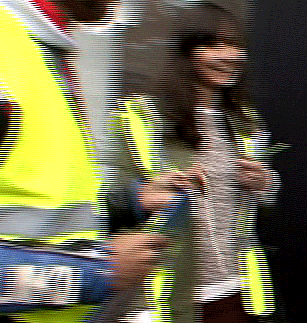
INTERLACING: A system developed for television which divides each video frame into two fields. This is done by first drawing one field consisting of an image's odd scan lines (1, 3, 5 etc.) and then drawing the remaining even scan lines (2, 4, 6 etc.), interweaving both fields. The fields can also be referred to as lower and upper. Interlacing reduces the perception of screen flicker. Interlacing can cause annoying effects with images such as computer generated text and graphics when transferred to video.

JITTER: Small, rapid variations in a waveform or image due most often to mechanical disturbances. (See also; TBC)
JIB: Small lightweight crane device for lifting and lowering a camera.
JPEG (JOINT PHOTOGRAPHIC EXPERTS GROUP): Is a digital compression standard for still video images that allows the image to occupy less memory or disk space. Like the MPEG standard, it includes options for trading off between storage space, data transfer and image quality.
JUMP CUT: An editing term; to cut within the same shot, or similar, causing time/action to alter. (See also; cut / cutting)

KEY LIGHT: The term used to describe a subject's main source of illumination. When shooting outdoors, the key light could be the sun for instance. (See also; reflector, fill light, gels, barn doors)
KEYS: Points in time used as reference for animation, i.e. key frames (principle positions in a movement).

LAVALIERE MICROPHONE: Small microphone worn around the neck or clipped to clothing (i.e. collar) using a small metal clamp the the microphone is attached to. Also called a tie mic, due to it being attached to the tie during news broadcasts. (See also; shotgun microphone)
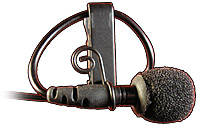
LCD (LIQUID CRYSTAL DISPLAY): A screen for displaying text/graphics based on a technology called liquid crystal, where minute currents change the reflectiveness or transparency of the screen. The advantages of LCD screens are very low power consumption (can be easily battery driven) and low price of mass produced units. Its disadvantages presently include narrow viewing angle, somewhat slower response time, invisibility in the dark unless the display is back-lit, difficulties displaying true colours and resolution limitations.
LINEAR EDITING: Editing using media like film or tape, in which material must be accessed in order (e.g. to access shot in order of rolls of film or video tape). (See also; nonlinear editing)
LINE PRODUCER: Keeps tabs on the budget and all items related to it. Works with the producer to get the best deals on equipment, locations, sets, wardrobe, props etc. On indy production is often the producer as well. Line producers may also be responsible for ensuring that equipment props etc are on set on the right days and on time, unless you have a big budget and can afford a "unit production manager".
LIP SYNC: Matching spoken dialogue with visual images so that the words are seen to be said and heard at the same moment synchronise. (See also; clapper board)
LTC (LONGITUDINAL TIME CODE): See; SMPTE.
LUMINANCE: The degree of brightness (black and white portion of the video signal) at any given point in the video image. A video signal is comprised of luminance, chrominance (colour information) and sync. If luminance is high, the picture is bright and if low the picture is dark. Changing the chrominance does not affect the brightness of the picture.
LUMINANCE NOISE: Noise which manifests itself in a video picture as white snow, typically caused by one of the following situations:
1) Low signal level due to poor lighting conditions
2) Poor video signal processing
3) Low quality videotapes
4) Excessively long video cables used without pre-compensation
5) Dirt on the video recorder heads which interferes with reading and writing
6) Over-enhancement of the video signal
LUX: A measurement of light intensity, which is used in photography for the comparison of camera sensitivities (1 Footcandle = 10.76 Lux). (See also; candlepower)

MACRO: Describes (camera / lens) getting very close up but not microscopic.
MANUAL OVERRIDE: Very useful (especially with modern camcorders). Allows you to override automatic settings and make your own. In terms of focus and exposure it can be essential in order to be creative.
MICROPHONE (MIC): Transducer (converts one form of energy into another) type device to pickup sound waves, or pressure variations and convert into electrical signals for recording onto audio device. Different types include;
1) Uni-directional
2) Omni-directional
3) Bi-directional
(See; lavaliere and shotgun microphones)
MOCAP: Abbreviation for Motion Capture Suit, used in film, television and video games. A ‘mostly’ lightweight body stocking type material which has markers and sensors to follow and/or detect motion, translating movement to be transferred to an on-screen 3D character etc..
MOIR: A distracting wavy effect produced when converging lines in a video image are nearly parallel to a monitors scanning lines.
MONITOR: A display that gets its signal directly from a camera or VCR, as opposed to a television, which relies on RF signals, such as those from cable television or broadcast. A monitor uses composite (RCA-style), S-Video (Y/C) and / or BNC video jacks.
MONOPOD: Usually telescopic, a single prop / leg device that holds a camera at the top and stabilises it when standing the monopod on the ground, or other suitably stable / solid object - without the cumbersome drawbacks of a tripod.
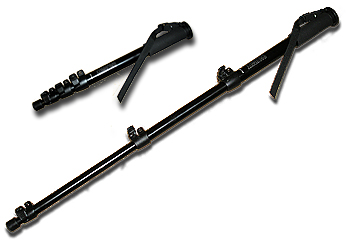
MOS (Mit-Out-Sprache): Abbreviation - described as fractured German - meaning ‘without speech’. Used on the clapperboard for mute takes.
MPEG (MOTION JPEG): MPEG is a digital compression standard for moving video images that allows the images to occupy less memory or disk space. Like the JPEG standard, it includes options for trading off between storage space and image quality.
MULTI-SCAN MONITOR: A monitor (also referred to as multi-sync or multi-frequency) which synchronises to different video signal sync frequencies, allowing its use with various computer video outputs.
MULTI-STANDARD MONITOR: A monitor which synchronises to different video signal standards such as PAL and NTSC.
MXF: Material eXchange Format. Known as an open-source file format, a “wrapper” for media files of differing formats (AVI, QUICKTIME, MPG etc). A method whereby files are compatible and can be opened by different editing software from the same file (MXF).

NARRATION: Dialogue over ("voice over") picture to verbally clarify, explain, or to add to visual elements on screen and / or narrative.
NG: Written abbreviation to indicate a take is No Good.
NLE (NON-LINEAR EDITING): Digital media edited on computer & hard drive, or other digital storage medium, rather than film and video. (Shots can be accessed arbitrarily - at random - and not in order on tape and film rolls). NLE is becoming the accepted norm for editing, and has brought the cost spiralling down. (See also; linear editing)
NOISE: A general term used in electronics to indicate any unwanted electrical signal, unrelated to the original signal. Video noise is generally manifested as snow, graininess, ghost images or picture static induced by external sources such as the national power-line grid, electric motors, fluorescent lamps, etc. In audio, noise is generally manifested as hiss and static. (Go to; "visual fx" for a TV monitor noise effect - pict sequence - to download).

NOISE GATE: A device used to modify a signal's noise characteristics. In video, noise gates provide optimal automatic suppression of snow (signal noise level). In audio, a noise gate provides a suitable signal level threshold below which all sound is removed.
NOISE REDUCTION: An electronic process used to reduce noise levels in audio and video. In video, the most effective noise reduction is accomplished by digitising the video signal and carrying out a computerised pixel by pixel analysis of the data. In audio, the most effective systems employ an encode/decode scheme, performed before and after recording, such as the Dolby audio noise reduction system. Noise reduction can be performed on an existing audio signal using systems such as DNR (dynamic noise reduction) but are less effective because they also affect the audio signal. (See also; hiss)
NONLINEARITY: The amount by which a measured video signal output differs from a standard video signal output. The greater this deviation, the greater the video signal distortion and possibility of luminance and chrominance problems.
NTSC (NATIONAL TELEVISION SYSTEM COMMITTEE): Video broadcast standard developed in 1950's and used in America, Japan and other Asian countries. (See also; PAL, SECAM)

OFF-LINE EDIT: Rough cutting editing video, usually with time code in order to log edit details via an edl.
ON-LINE EDIT: The final cut/master for a video, or non-linear edit, which can include a full soundtrack and titles.
OVER CRANKING: Term from film, meaning to run a camera at a faster speed than normal and produce a slo-mo action sequence when played back at the correct speed. (See also; under-cranking & fps)
OVERLAY: Keyed insertion of one image into another. Overlay is used for example, to superimpose computer generated text on a video image, for titling purposes. In video, the overlay procedure requires synchronised sources for proper operation.
OVERSCAN: Video images generally exceed the size of the physical screen. The edge of the picture may or may not be displayed, to allow variations in television sets. The extra area is called the overscan area. Video productions are planned so critical action only occurs in the centre safe title area. Professional monitors are capable of displaying the entire video image including the overscan area. (See also; underscan)

PAL (PHASE ALTERNATING LINE): Video broadcast standard developed in 1960's and used in continental Europe (inc; UK), except France. (See also; NTSC, SECAM)
PAN (PANNING): Short for panorama. Camera movement description, twisting from side to side (left to right etc). (See also; "tilt", "crane", "crab dolly", "dolly")
PEDESTAL: The pedestal is a small DC voltage step within the video signal indicating a pictures black-level and is used as the reference in a standard video signal for white level and all grey levels.
PHASE ERROR: A change in the colour subcarrier signal which moves its timing out of phase, i.e. it occurs at a different instant from the original signal. Since colour information is encoded in a video signal as a relation between the colour subcarrier and the colour burst phase, a deviation in the colour subcarrier phase results in a change in the image's hue.
PIP (PICTURE IN PICTURE): A digital special effect in which one video image is inserted within another allowing several images to share a single screen.
PLAYBACK: The process whereby a videotape is displayed on a monitor or TV screen. During playback, use of a video processor such as the Video Equaliser can be used to alter, enhance, correct or restore a signal.
PLAYING FROM CENTRE: Character acting that is motivated by a performers own personality. (See also; typecasting).
POSTERISATION: A special effect in which the picture is reduced to a small number of colours or luminance levels removing any fine gradations of colour and brightness resulting in an oil painting effect.
POST PRODUCTION: Work that is undertaken usually when filming is well underway, or completed. Would include things like editing, music, sound track, special effects and titles.
POV: An abbreviation meaning Point Of View, i.e. using the camera as a characters (persons) viewpoint for instance.
PRE (PRELIMINARY/PREPARATORY) PRODUCTION: Work required before filming can go-ahead, from script to sets/props & locations, not forgetting cast and crew.
PRIMARY COLOURS: The basic colours used in TV and video systems are red, green and blue. (See also; RGB)
PRODUCER: Finds the financing for a project and is head of getting the project together, in practical terms. Often in independent films the Producer is also the Director. (See also; line producer)
PRODUCTION: The broad term used to describe a film venture/project, and specifically the filming/shooting part of the process.
PRODUCTION ASSISTANT: With abbreviated names like "gopher" and "runner", these are crew members who literally fill in, in many ways. Getting things, go for (go-pher) this, go for that.
PROP/S (PROPERTIES): Item/s or article/s used by actors during filming (other than costumes and scenery).
PULL OUT: Camera shot that moves away from the subject. See; dolly
PUSH IN: Camera shot that moves closer to the subject. See; dolly

RASTER: The pattern of parallel horizontal scanning lines, traced by a video monitors (TV sets) electron beam, making up a video image.
RCA CONNECTOR: A type of connector used on all consumer VCRs and camcorders to carry the standard composite video and audio signals.
RECCE: Scouting locations before filming. In terms of suitability for the film and also suitability for crew, access etc.
REFLECTOR: (Lighting); Usually flat (white, or light) board/card used to reflect/bounce light from main source as filler. The two examples below demonstrate the difference;
A) Has no reflected light.
B) Includes a reflector to fill in the dark area of the face/hair.
(See also; key light, fill light)
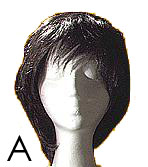 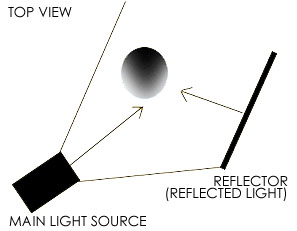 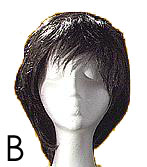
RF (RADIO FREQUENCY): A term used to describe the radio signal band of the electromagnetic spectrum (about 3 MHz to 300 GHz). RF connectors, such as those used for the cable TV or antenna inputs on a TV receiver, carry modulated television signals.
RGB (RED, GREEN and BLUE): The basic components of a colour video signal. Using a colour encoder, in conjunction with sync information, a complete composite video signal comprising luminance, chrominance and sync can be generated from RGB. (See also; component video)
ROSTRUM: Device to hold a camera above a flat working surface for paper and/or cell animation (2d artwork). (See also; animation and cell)
ROUGH CUT: Initial editing/edited version of a film (either in part, or whole). (See also; off-line, editing, rushes, dailies)
RUNNER: Transport things between a production office and the set / crew.
RUSHES: Term meaning ‘rough cut’ media prepared as production underway without proper sound and picture editing / cutting to see how material is working / looking. (See also; dailies)

SAFE CAPTION/TITLE AREA: Generally, the centre 80% of the entire overscan video image area or that area which will display legible titles regardless of how a monitor, or television set is adjusted. Go to: ‘Caption/Title Safe Area’.
SCENE/S: Breaks down the action into different locations / places and/or times.
SCOOP: See; fill light.
SCREENPLAY: The blueprint for your story and movie, often called the script and also referred to as a teleplay if shorter then feature length (US mainly). Screenplays include all dialogue, set and character action details, but simply and clearly. Go to: ‘Screenplay’.
SCRIPT BREAKDOWN: A scene by scene account/list of things needed for each individual scene, from props to performers and equipment. (An example/template of a "script breakdown").

SCRIPT SUPERVISOR: Crew member that knows the script inside out and ensures that there are no continuity errors during filming. Ensuring that actions, costumes/props are in the correct place/time during filming. (See also; continuity)
SECAM (SEQUENTIAL COULEUR AVEC MEMOIRE) SEQUENTIAL COLOUR WITH MEMORY: Sequential Colour with Memory (Sequential Couleur Avec Memoire) video broadcast standard developed in 1960s and used in France. (See also; NTSC, PAL)
SHOTGUN MICROPHONE: Long, directional / unidirectional (condensor / super condensor) microphone designed to pick up sounds mainly in front of the microphone. (See also; lavaliere microphone)

SHOT/S: Individual camera position and coverage within a scene. Many shots may be needed to follow action within scenes. (See also; take/s, clapperboard)
SN (SIGNAL TO NOISE RATIO): The ratio in decibels (dB), of an audio or video signal, between the signals maximum peak-to-peak signal voltage and the measured voltage of what remains when the signal is removed, (i.e. the ratio of the signal to that of the noise). In video, the higher the ratio, the less snow is visible. In audio, the higher the ratio, the cleaner the sound. Audio s/n ratios vary tremendously from compact discs / camcorder AFM Hi-Fi tracks (typically 90 dB) to VCR linear tracks (typically 40 dB).
SINGLE FRAME: One picture/frame on film, a camera that is capable of exposing one frame individually. (See also; animation & fps)
SLO-MO: Abbreviation for Slow Motion, describing events filmed so that they are slower than normal when viewed. (See also; over-cranking & fps)
SMPTE (SOCIETY OF MOTION PICTURE AND TELEVISION ENGINEERS): SMPTE-VITC Vertical Interval Time Code. Usually recorded onto the linear audio track of a VCR or audio tape machine. (See also; time code, edl and ebu)
SNOW (PICTURE): A general term used to describe interference in a video image. It manifests as random coloured or black and white dots. (See also; luminance noise)
SOLARISATION: Visual effect in which the lightest and darkest values of a picture are made dark while the middle tones become light.
SPLIT SCREEN: An electronic, digital or optical process which allows the viewing of two images side by side or above and below, on-screen simultaneously.
STAGING: The shots within a scene. Ensuring that actors and props, lights etc. are framed correctly for the shot and actors know their positions within a shot. Organising sets of shots and action around camera and lighting set-ups (although there can be other considerations), for the most effective and economical use of shooting time. For instance, filming all shots while in one set-up (camera and lights positioned and facing one direction), before proceeding to shoot all shots in another set-up where the camera and lights are facing the opposite direction from the first. This is one reason why films are not filmed in story sequence. (See also; blocking)
STEPPING (COMPUTER/VIDEO): Unwanted visual appearance. See; Aliasing
STEREO MIXING: Simultaneous processing of both left and right audio channels.
SUPERIMPOSE: To place in front of one image, e.g. placing text over a video signal.
STORYBOARD (SHOOTING SCRIPT): A pencil / pen sketch way of working out shots to film a sequence of action and/or dialogue. Completed a storyboard covers a film/story visually from start to finish. A "storyboard" is the visual equivalent of a plan. Shooting script describes the fact that a storyboard can be written descriptions instead of pictures. Go to : ‘Storyboards’.
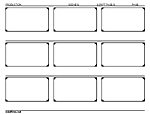
SYNC / SYNCHRONISE:
1) To marry / match sound (audio) to picture (film, video). (See also; clapperboard, lip sync)
2) A term used in electronics to describe the precise alignment of two signals or functions. In video, sync is an essential element for maintaining the proper clocking of video signals. The sync signal is used by a monitor to know where and when to draw the on-screen video image. The horizontal sync signal is a short pulse generated at the beginning of each video line which tells the video monitor when to draw each new line. The vertical sync signal is a short pulse generated at the beginning of each video frame which tells the video monitor when to start a new field. Sync signals reside in the part of a video signal in which no visual picture information is transmitted. During this blanking period or horizontal or vertical interval, the electronic beam is blanked and retraces back to the other side of the screen to start a new line or new field. Since this is done during the blanking period, it is invisible to the viewer. Both horizontal and vertical sync are required in order to maintain a stable on-screen picture. Many video processing devices provide sync restoration and correction circuitry. Sometimes, a TBC is required to recover or restore sync. (See also; genlock)

TAKE/S: A shot may require a number of tries before the action and shot is considered successful, hence take 1, 2 and so on. (See also; shot/s, clapperboard)
TALLY LAMP: A signal lamp or LED installed on a video camera which informs performers and crew members that the camera is currently "live" or “recording”.
TBC (TIME BASE CORRECTOR): A device used to rectify any problems with a video signals sync pulses by generating a new clean time base and synchronizing any other incoming video to this reference.
TC (TIMECODE): Represents time in hours, minutes, seconds and frames, recorded onto tape during filming. These numbers also place any shot, or part of (in & out points) within its final edited context. Time code is also useful to lock music to picture and get timings accurate. Often time code is unseen, but when it is visible on-screen (as in the example below) it is termed burnt-in or in-view. (See also; edl, smpte)
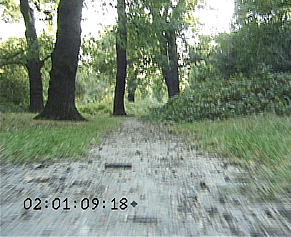
TK (TELECINE): Transferring film media onto video (also termed TK), or instruction to run film insert during videotape recording.
TELEPHOTO: To zoom into something, make it appear closer, opposite to wide angle. (See also; macro)
TELE-PROMPTER: See; auto-cue
TILT (TILTING): Camera movement description for tipping camera back or forwards (pivoting) to change/alter angle of shot. (See also; pan, crane, crab dolly, dolly)
TIME LAPSE: Taking separate/individual frames over a period of time (usually via timer) which produces sequences where time is speeded up (i.e. shifting sky/clouds). (See also; fps & under-cranking)
TITLE SAFE AREA: Go to; Caption/Title Safe Area
TRACKING (VIDEO HEAD): The angle and speed at which the tape passes the video heads. Due to small differences in head-to-tape alignment between VCRs, it is sometimes necessary to adjust the tracking control on a VCR when playing a tape recorded on another deck.
TRACKING (SHOT): Camera movement via dolly usually on metal runners/tracks.
TRANSCODER: A device used to convert from one component system to another or one video standard to another. (e.g. PAL to SECAM)
TRIPOD: Three legged device to stabilise a camera, usually has additional part (head) at the top. (See also; monopod)
TYPE CASTING: A performer picked for their similarity in personality to a character, or association with certain character traits from previous parts played. (See also; playing from centre).

UHD, UHD-1. UHDTV: See 4K
U-MATIC VIDEO TAPE: Three quarter inch videotape developed by Sony and release onto the market in 1971, came in two formats, High-Band for professional online edit use and Low-Band for semi professional, or offline edit use. It was one of the first video tape formats in cassette form. Low-Band was the original release format, with High-Band being introduced some time later. (See also; D-3 and Betacam SP)
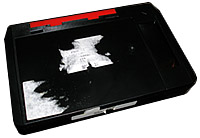
UNDER CRANKING: Film related. To run a camera at a slower speed than normal, so that the action comes out faster when played at normal speed. (See also; over-cranking & fps)
UNDERSCAN: The opposite of overscan. In underscan, a video or computer image is reduced so that all four edges are visible on-screen, leaving it surrounded by black borders. Underscan is used to show what is happening in the blanking period and at the beginning and end of scan lines and frames. Underscanning can uncover latent image problems for identification and correction.
UW4K: See 4K

VCR: Video Cassette Recorder.
VERTICAL INTERVAL SWITCHING: Randomly switching from one video signal to another, will often result in a jump in the picture upon playback. The problem is compounded when the tape is copied. To avoid this problem, switching is best performed on synchronised signals during the vertical blanking retrace period, known also as the vertical interval. This allows complete replacement of one whole frame by a second whole frame resulting in a very smooth on-screen switch.
VHS: Domestic video format since 70's (Video Home System).
VIDEO BANDWIDTH: The range between the lowest and highest signal frequency of a given video signal. In general, the higher the video bandwidth, the better the quality of the picture. Video bandwidths used in studio work typically vary between 3 and 12 MHz. Consumer VCRs are generally capable of 3-5.5 MHz.
VIDEO CAMERA: A camera which contains an electronic image sensor rather than photographic film. The lens focuses an image on an electronic tube or CCD chip. A camera has electronic circuitry which generates colour and sync pulses. Most portable consumer cameras are equipped with a full complement of audio circuitry, e.g. microphone, audio amplifier and additional audio electronics. In order to obtain better quality images, a professional camera has a triple CCD system, one for each basic colour. Most professional cameras have a genlock input, which allows the camera to be synchronised to an external sources.
VIDEO CARD: Hardware required to play video into a PC and onto a computers hard drive.
VIDEO GAIN: The nominal composite video signal level is 1 volt. At this level, a fully saturated image is transmitted and boosting the signal offers no advantage. Most video equipment is designed to output the same 1-volt level video signal. In cases where the signal level has been reduced, such as after a long cable run, an amplifier with video gain may be employed to restore the proper level.
VITC: See; smpte
VOICE OVER: See "narration".
VT: Abbreviation for Video Tape. A thin plastic strip coated with metal oxides that magnetically records (analogue / digital) onto/into the oxide/metal. There have been and are many different types/sizes, which have included; 2 inch, 1 inch (both reel to reel), also cassette versions; Betamax, Betacam, Beta SP, Hi-8, Umatic, M2, Mini DV etc.
VTR: Video Tape Recorder.

WIDE ANGLE: Lens that allows a large field of view, opposite to telephoto.
WHITE BALANCE / LEVEL (VIDEO): Different lighting conditions create different colour temperatures (not just light and dark), video has a device in order to ensure that whatever the light is, the colours will be correct. Failure to white balance could result in peculiar coloured people and places. White balancing requires a piece of clean white card / paper to fill the screen (in front of lens). See your cameras tech manual for full details.

XLR: Three pronged connector / plug (male and female) mainly used for professional audio equipment (including camcorders). XLR connectors are also used for lighting and low-voltage power supply plugs as well.
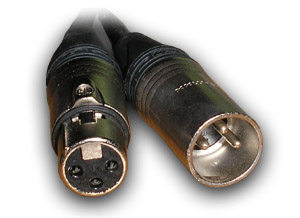

YC: (Luminance and Chrominance) A term used to describe the separation of video signal components used in systems such as S-VHS
YUV: A video system employing luminance and two chroma components directly related to the red and blue components. This professional component video system is used in studios and requires special equipment. Interface devices are used to link the various component systems, i.e. RGB, Y/C, YUV and YIQ (a system similar to YUV).
|
|
 |
 |
 |
|
|
|
Copyright © indefilms.net 2005 - 2023. All rights reserved.
|
|